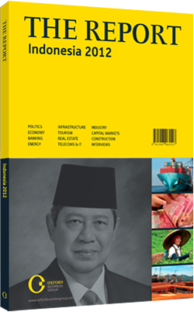I Made Mangku Pastika, Governor of Bali: Interview

Interview: Made Mangku Pastika
To what extent has a growing population and the increased number of visitors placed a strain on Bali’s infrastructure?
MADE MANGKU PASTIKA: In the first nine months of 2011 the number of foreign tourists visiting Bali reached over 2m, an increase of more than 10% over 2010 arrivals during that same period. This was despite poor economic conditions in the US and Europe. Should those markets rebound in 2012 and the Asian economies continue to thrive, Bali will likely achieve even more accelerated tourism growth in 2012.
While this is certainly positive in regards to the economic prosperity of our citizens, we must also be wary of the type of impact it is having on our infrastructure and environment. Bali is only slightly more than 5600 sq km and its ideal number of inhabitants would be around 1.5m people. Currently, however, almost 4m people inhabit the island. On top of this we have to accommodate a rapidly increasing number of foreign tourists every year.
We have to recognise that we have a growing congestion and traffic issue that needs to be addressed. Our domestic and international airport requires further expansion and we also need to improve our waste management systems to clean up high-density areas like Denpasar. It will require the assistance of every sector of our society to preserve Bali’s reputation as a heaven on earth.
How do you intend to address the issue of overcrowding in southern Bali?
PASTIKA: It is essential that we begin limiting the number of new hotels, resorts and villa developments in the south. By restricting the number of rooms being introduced into the market, we are tightening supply and raising the price of everything, including accommodation, taxis, food, tours, etc. This will be crucial if we intend to make southern Bali an exclusive destination that attracts the type of visitors who stay longer and spend more money.
In the meantime we have undertaken an aggressive strategy that will require considerable investments in our hard infrastructure. For example, we have introduced the Sarangan-Nusa Dua toll road, which will ease traffic congestion on the existing highway to Nusa Dua and to the airport. It will also help increase the number of tourists visiting that area.
We also plan to expand the existing transport network by building a number of new roads. However, it is important that we develop the network carefully, without disturbing our temple sites, which are extremely important to our culture and identity.
In 2011 we also began expanding and upgrading our facilities at the international airport in Denpasar, with an investment of over $210m.
How do you intend to encourage tourism development in areas outside of southern Bali?
PASTIKA: We have to encourage investment throughout the island. This will not only address the overcrowding of southern Bali but will also stimulate the economies of our lesser-known regions, which will have a positive impact on the economic conditions of citizens who currently do not benefit from a robust tourism industry. This project, however, will require us to provide the necessary supportive hard infrastructure for investors. We have already started construction on a second international airport in northern Bali as part of our strategy to open that market. Northern Bali has all the same attractions as southern Bali, with beautiful beaches and the rare culture and ambience that has attracted tourists to visit our island for many years. The only difference is that it is not as congested and offers visitors a more relaxing experience. We also plan to construct a 565 km railway around the entire island.
All of the measures I have mentioned and more will be required if we wish for our infrastructure to be prepared to support an increasing number of visitors, which could climb to 5m per year by 2015.
You have reached the limit of premium articles you can view for free.
Choose from the options below to purchase print or digital editions of our Reports. You can also purchase a website subscription giving you unlimited access to all of our Reports online for 12 months.
If you have already purchased this Report or have a website subscription, please login to continue.

